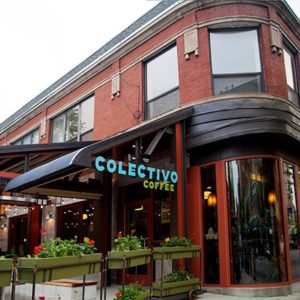In a world of convenience, there’s something deeply satisfying about preparing staple ingredients like rice and beans from scratch. Beyond the economic benefits, cooking dry rice and beans allows you to customize flavors and achieve a superior texture. In this guide, we’ll walk you through the process of buying and cooking dry rice and beans for a delicious and wholesome culinary experience.
Buying Dry Rice:
1. Varieties:
- Choose from a variety of rice options such as long-grain, short-grain, basmati, or jasmine, depending on your recipe preferences.
2. Packaging:
- Purchase rice in bulk to save money, or opt for larger bags if you have sufficient storage. Look for intact packaging without any signs of damage.
3. Storage:
- Store dry rice in a cool, dark place to maintain freshness. Consider transferring it to airtight containers to prevent moisture and pests.
Cooking Dry Rice:
1. Rinsing:
- Rinse the dry rice under cold water to remove excess starch, which can cause stickiness. Repeat until the water runs clear.
2. Water-to-Rice Ratio:
- Follow the recommended water-to-rice ratio on the packaging or use the general guideline of 2 parts water to 1 part rice.
3. Cooking Methods:
- Choose a cooking method based on your preference: stovetop, rice cooker, or Instant Pot. Adjust cooking times accordingly.
4. Seasoning:
- Enhance the flavor by cooking rice in broth, adding a splash of olive oil, or seasoning with herbs and spices.
Buying Dry Beans:
1. Varieties:
- Explore a variety of dry beans such as black beans, kidney beans, chickpeas, or pinto beans. Each type brings its unique flavor and texture.
2. Quality Check:
- Inspect the beans for uniform size, color, and lack of discoloration or damage. Avoid beans with a wrinkled appearance.
3. Packaging:
- Purchase dry beans in bulk for cost-effectiveness or in larger bags for convenience. Check for a secure and intact packaging.
Cooking Dry Beans:
1. Soaking:
- Soak beans overnight in cold water to soften them. For a quick soak, cover with boiling water and let sit for 1-2 hours.
2. Rinsing:
- Rinse the soaked beans thoroughly to remove any residual compounds that can cause digestive discomfort.
3. Water-to-Bean Ratio:
- Use a water-to-bean ratio of approximately 3 parts water to 1 part beans. Adjust based on the type of beans and desired consistency.
4. Cooking Methods:
- Cook beans on the stovetop, in a slow cooker, or Instant Pot. Simmer until tender, adding seasoning and aromatics for added flavor.
5. Storage:
- Store any leftover cooked beans in the refrigerator or freeze for later use. Cooked beans are versatile and can be added to various dishes.
By buying and cooking dry rice and beans, you not only save money but also gain control over the quality and taste of these pantry staples. Embrace the satisfaction of preparing wholesome meals from scratch, and enjoy the flexibility of incorporating these versatile ingredients into a wide array of dishes. Elevate your culinary experience with the simplicity and authenticity of home-cooked rice and beans.
In the realm of kitchen essentials, the choice between cooking dry rice and beans from scratch versus opting for the convenience of canned versions is a decision that holds numerous benefits. While canned options provide quick fixes, the unique advantages of preparing rice and beans at home bring a rich tapestry of flavors, textures, and culinary control. Let’s explore why the extra effort of cooking rice and beans from scratch is a choice well worth making.
1. Flavorful Mastery:
- The unparalleled depth of flavor in homemade rice and beans is a testament to the use of fresh, high-quality ingredients. Canned alternatives may carry a hint of preservatives, while cooking from scratch allows you to savor the pure essence of each grain and legume.
2. Texture Tailoring:
- Cooking dry rice and beans grants you the liberty to control the texture precisely. Canned counterparts might offer a uniform texture, but crafting your dish allows for customization – whether you prefer perfectly tender beans or al dente rice.
3. Health-Conscious Cuisine:
- Homemade cooking empowers you to make health-conscious choices. Canned options often come laden with sodium and preservatives, which can be minimized or eliminated when preparing your rice and beans. This hands-on approach enables you to create meals that align with your dietary preferences.
4. Budget-Friendly Brilliance:
- From a financial perspective, cooking dry rice and beans is often more budget-friendly than purchasing canned alternatives. Buying in bulk allows you to stretch your budget, and portion control helps minimize waste.
5. Eco-Friendly Elegance:
- Opting for dry rice and beans over canned contributes to a more eco-friendly kitchen. Canned goods typically involve packaging that may contribute to waste, while bulk dry goods can be stored in reusable containers, reducing your environmental impact.
6. Culinary Canvas:
- Cooking from scratch transforms rice and beans into a culinary canvas for your creativity. Experimenting with various herbs, spices, and seasonings allows you to craft a diverse range of flavors that suit your taste preferences.
7. Sensory Indulgence:
- The act of cooking itself becomes a sensory indulgence. Engaging your senses – from the visual appeal of ingredients coming together to the aroma wafting through the kitchen – enhances the overall dining experience.
8. Personal Connection:
- Preparing rice and beans from scratch establishes a personal connection to your food. The knowledge that you’ve invested effort into creating a meal fosters a sense of satisfaction and pride, making each bite more meaningful.
In essence, while canned goods offer convenience, the benefits of cooking rice and beans from scratch are unmatched. The unique flavors, textures, and the joy of the culinary process make homemade versions not just a choice but a celebration of kitchen craftsmanship. So, embrace the artistry of cooking, and let the simple yet profound act of preparing rice and beans from scratch elevate your culinary experience.












Be First to Comment